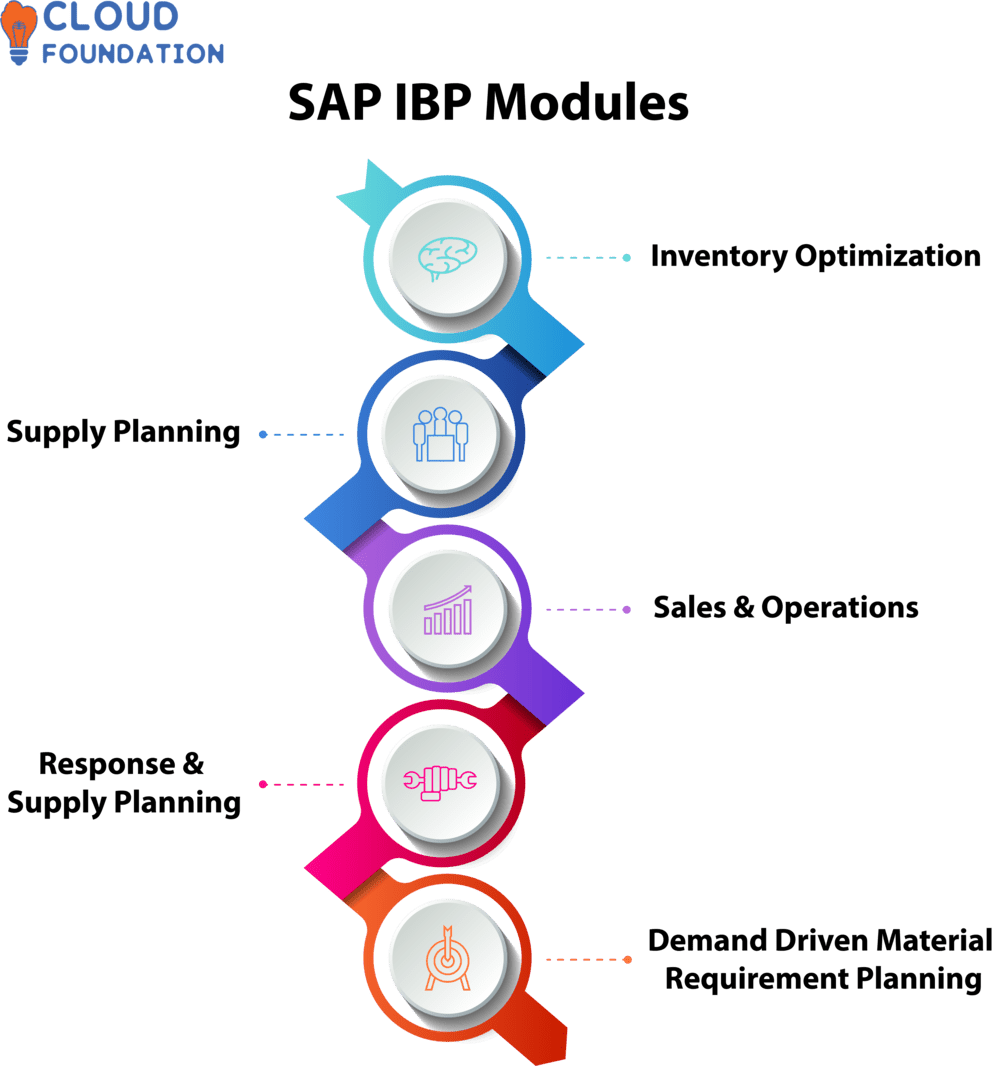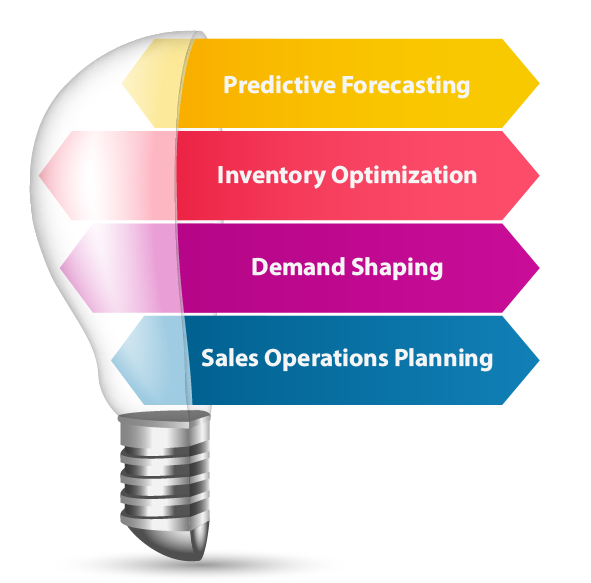SAP IBP Tutorial for Beginners
SAP IBP full form or What IBP stands for ?
SAP IBP stands for Integrated Planning Solution. A situational analysis provides an overview of significant scenarios, enabling multi-organizational planning. Proactive planning and forecasting allow improved accuracy and decision-making processes.

SAP IBP features all functionalities associated with planning cycles.Users can create customised arrangements to Access and Analyze Data from Multiple Sources as their organization expands.
This approach allows organizationsto identify and resolve market issues before they become problematic quickly, track performance accurately and predict outcomes.
Solution features include company-specific scenarios to maintain data consistency and employ KPIs proactively for business advantage, with fast cloud platforms helping firms effectively plan and forecast.
SAP IBP Modules

Inventory Optimization: It assists organizations with evaluating best-selling, regular and inventory levels to enhance safety stocks, order cycles, and surplus management, as well as help determine where to order and keep a list.
Supply Planning: It streamlines supply chains and improves planning by accurately anticipating raw material delivery, production lead times, product availability etc.
Additionally, this tool helps companies detect planning gaps, assess risks & opportunities, andoptimise supply chains to reach optimal performance levels.
Sales& Operations: SAP IBP’s Sales & Operations components enable companies to keep tabs on past performance, current trends and production capacity quickly and easily, helping teams quickly review past success as a means to plan for success in the future.
Response & SupplyPlanning: It helps firms plan, track, and react quickly during supply disruptions. By providing supplier performance data and risk insight for identifying future events and mitigating risks to handle emergencies effectively, the module offers firms the necessary resources for emergency preparation.
Demand Driven Material Requirement Planning: (DMRP) in SAP IBP helps supply chains plan materials to meet customer demand while managing inventory in light of variable orders, optimising supply chains to anticipate needs, working stocks and material prices, and delivering superior customer service.
SAP IBP Software
People using IBP are also empowered to build highly predictive models and simulations for tracking supply chain lifecycle control using cutting edge data science and analytics techniques.
IBP was designed with simplicity in mind, both its use and maintenance can be easily managed while remaining highly scalable.

Thanks to IBP’s cloud-first architecture, the planning process from start to finish becomes effortless, users may quickly enter data using an intuitive user interface before getting instantaneous insights about any risks or opportunities, then utilize that information for creating more precise plans and projections with its Drag-and-Drop user experience, even newcomers to IBP have no trouble building complex models quickly using IBP!
This system impacts every link of its supply chain, using deep learning models combined with powerful algorithms it delivers real-time insight into operations that impact business goals, possibilities for increasing sales while decreasing expenses, as well as which path leads to maximum efficiency for each path.

SAP IBP Training

IBP analytics platform even utilizes unstructured sources like news and social media data so users can understand a dynamic market and adjust estimates appropriately.
Furthermore, prebuilt analytical models give customers access to examine their operations quickly and correctly before making informed choices that will benefit their companies in the long run.
Order-Based Planning SAP IBP
An effective supply chain management system must include order-based planning, as supply networks become more intricate this becomes ever more essential.
Businesses may more accurately predict demand and adjust their supply chains with SAP IBP. With critical criteria like on-time delivery and product availability in mind, the system assists companies in setting up orders from source to delivery with speed.
They may monitor performance KPIs to make corrections and modifications as quickly as necessary so their demands are fulfilled on schedule.
SAP IBP also aids businesses in tracking client satisfaction levels and understanding consumer purchasing patterns, so they may make more accurate judgements concerning stock levels, order fulfilment procedures and unexpected demand handling, helping reduce order fulfilment costs while optimizing inventory levels.
Companies may gain an edge against rivals and create competitive differentiation by employing SAP IBP’s order-based planning features.

Techniques may include Predictive Forecasting, Inventory Optimization, Demand Shaping and Sales Operations Planning.
Businesses could also reap the rewards from IBP’s analytics capabilities which support them in identifying areas for development while creating effective plans to manage order-based planning operations more successfully.
Sales and Operations Planning with SAP IBP
Sales and operations planning (S&OP) is critical to the modern firm in order to accurately plan, forecast, and optimize supply chain activities in an ever-evolving business environment.
SAP IBP allows firms to better align demand supply plans while improving overall efficiency of planning process.
They using this tool find it simpler to gain current supply and demand information quickly and accessing one system of records allows them to model various procure-to-pay process scenarios and Analyzeoptimized outcomes such as costs, capabilities and resources in order to make informed choices that result in more strategic procurement processes.
Understanding client demand patterns and using this knowledge to select effective marketing strategies are vital in recognizing sales potential. Businesses may utilize existing SAP systems for improved record keeping accuracy.
Furthermore, its modeling features may assist companies in quickly determining solutions which may best satisfy client requirements, while real-time visibility into results allows businesses to act swiftly but wisely when necessary.
SAP IBP promotes cooperation among staff by offering a centralized database that all users can utilize to make more informed plans, thus eliminating departmental gaps and encouraging a streamlined planning process based on precise data.
SAP IBP Process Flow
SAP IBP process flow provides businesses with an integrated suite of planning and analytics software designed to give a thorough understanding of their operations as well as enable tracking, examining and planning for various tasks related to demand planning, inventory optimisation and supply network planning.
Companies may increase their ability to anticipate demand management through this software programme in order to generate maximum company value for themselves.
Every element follows an equally fundamental procedure from data collection and analysis through to planning.
There are 3 stages of SAP IBP Process Flow i.e. Data gathering, Data Analysis and Planning.

Data Gathering: Data gathering is the initial stage in SAP IBP process flow, where information from both internal and external sources (market trends, consumer preferences) are compiled for analysis.
Businesses utilize external data sources like social media or market research in this stage in order to gain an in-depth knowledge of consumers, their needs, competitive environments in various sectors as well as sales data such as inventory levels or production figures that might aid data-gathering activities.
Data Analysis: It is the second step of any process. Here, a business will conduct analysis on its collected information to gain valuable insight that may inform decision making processes.
In-house analysts or third party programs such as SAS or Power BI may perform Analyze s manually or automatically for their company.
Planning: It is the third stage in SAP IBP process flow and involves businesses creating an actionable plan based on information received and examined, this may range from supply chain optimisation to demand planning.

SAP IBP Online Training

SAP IBP Meaning
A comprehensive platform exists that manages demand, supply, finances, pricing and order management on behalf of businesses utilizing it as part of daily operations management.
IBP SAP gives businesses an integrated way of overseeing daily business functions with one integrated method for running them effectively and efficiently.
Real-time visibility into supply chains using sophisticated analytics is offered with this software solution, further increasing operational performance and visibility.

IBP SAP’s Advanced Analytics and Demand Supply capabilities assist businesses in increasing operational efficiency, with less surprises, better decision-making skills and reduced stockouts.
Organizations benefit from greater forecasting accuracy and better decision-making using IBP SAP data-driven insights for improved business decisions and revenue increases.
SAP IBP Master Data
IBP Master Data is the business terminology for keeping track, managing, and organizing all their information into one central place, often called a master database or master file system, including customer, product and service data collected from any source gathered as part of daily business operations and performance.
It allows companies to keep tabs on data in real-time for evaluation as well as improvement purposes.

IBP Master Data technology Synchronizes Records, Increases Accuracy of Data Entry, Prevents Duplication or Mistakes and helps businesses keep pace with expanding volumes of information.
Users gain access to accurate information via one source courtesy of IBP Master Data technology which then can be utilized by operations, sales or manufacturing departments of their firm for use throughout operations or manufacturing operations.
IBP Master Data offers organizations several advantages:

Improved Data Accuracy: By having all information stored in one central place, inputting duplicate copies is no longer required, leading to less mistakes and inconsistent information being submitted for processing.
Automating Data Updates: Automated updates allow organizations to rapidly synchronize data within their system without human interference and maintaining accuracy for every piece of information in it.
Improved customer service: Businesses can more quickly access client data for faster and superior service when using one data source as the point of access.
Decrease expenses: Automation can lower expenses while simultaneously improving operational effectiveness, thus cutting labour and related costs and saving on operational expenditures.
Enhance Security: Access to IBP Master Data is protected against unauthorized entry and intrusion.Any business needing accurate and timely data for its operations must leverage IBP Master Data.

SAP IBP Course Price


Ankita
Author